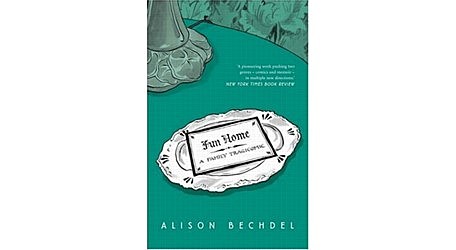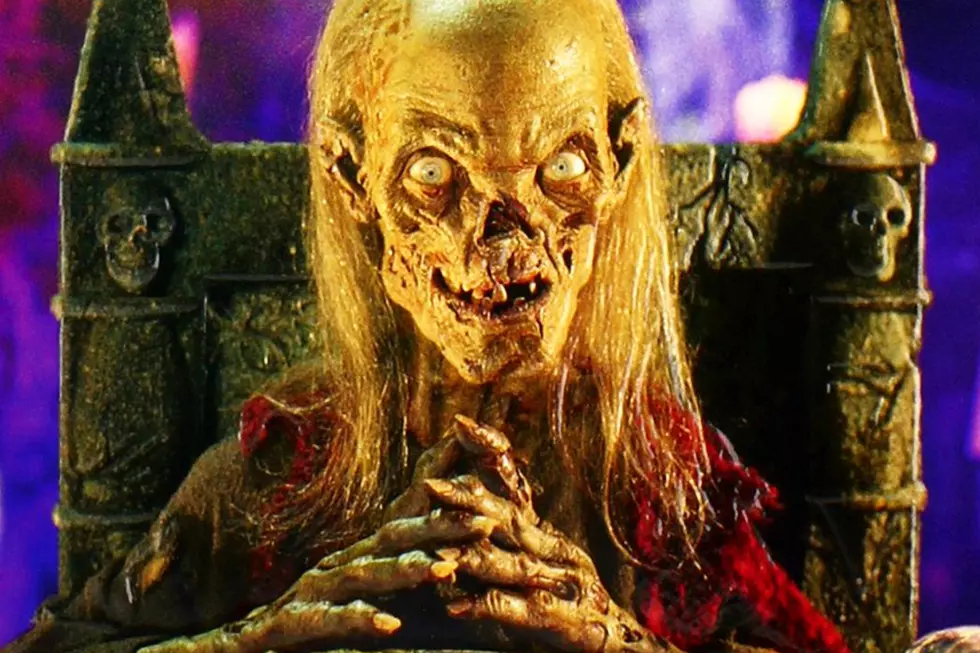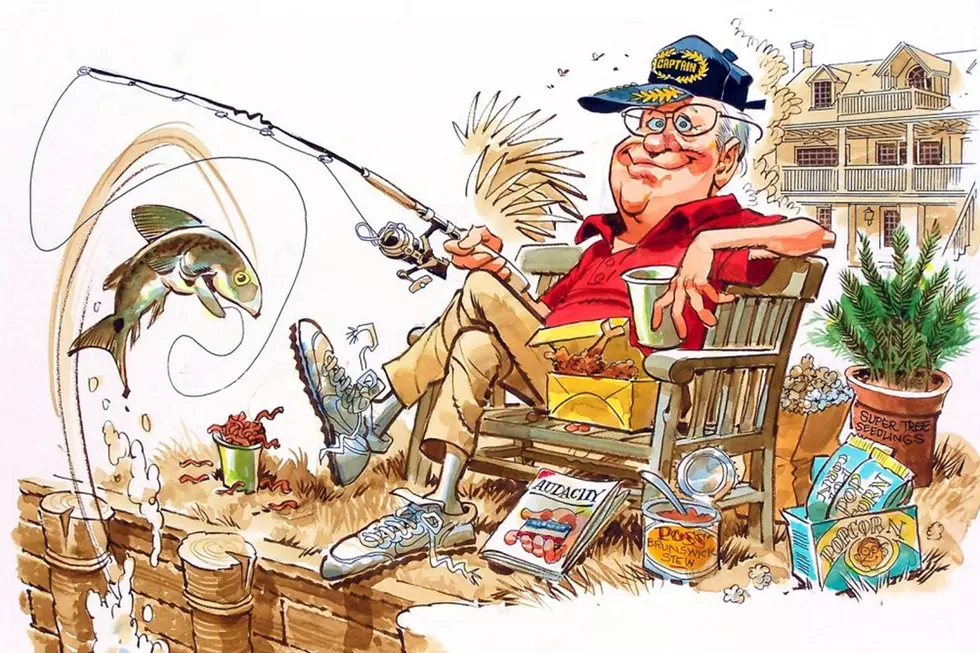
Celebrate Freedom: Read a Banned Comic
 This week is Banned Books Week, when we celebrate the fact that we live in a country where we are free to say, write and read what we choose -- and the importance of being vigilant against those who would try to erode those rights and make those choices for us.
This week is Banned Books Week, when we celebrate the fact that we live in a country where we are free to say, write and read what we choose -- and the importance of being vigilant against those who would try to erode those rights and make those choices for us.
Of course, traditional books aren't the only reading material that gets banned; plenty of comics and graphic novels have found themselves on the chopping blocks of police, politicians, censors, and your classic angry mobs.
So we encourage you to celebrate this occasion by joining the Comic Book Legal Defense Fund free speech organization, and by checking out something from our list of comics that have been banned, censored, removed or challenged in libraries, or even lead to lawsuits, police raids, arrests, and death.

No list of banned material would be complete without a nod to the mother of all US comics controversies: the EC horror and crime comics of the 1950s. The scary, often gruesome stories sparked a near-hysteria after a German psychiatrist named Frederic Wertham accused them of corrupting America's youth in his 1954 book called "Seduction of the Innocent." Wertham blamed comics for a rise in juvenile deliquency, but then, he also believed that Batman and Robin were secret homosexuals trying to gayify your children, so it's important to take his freakout with a grain of salt, which no one did.
This all eventually lead to hearings in a Senate subcommittee on juvenile delinquency, and spawned a highly restrictive Comics Code that censored and whitewashed the entire medium to an absurd degree, even forbidding the actual word "horror." But the good news about this, if there can be any, is that 1) over the last decade the Comics Code has become almost completely irrelevant, 2) We're in the middle of a crime comics renaissance right now, and 3) you can enjoy big fat collected editions of the scary stories that made a nation lose its collective mind any time you want.
(Buy EC Archive Editions of "Shock Suspenstories" or "Vault of Horror")
Muhammed Comics

Unlike the wailing and gnashing of teeth that took place over American comics in the 50s, the Muhammed cartoon controversy is not only very recent, but internationally important, and deadly. It all kicked off in Denmark with the 2005 publication of 12 editorial cartoons in the "Jyllands-Posten" newspaper featuring the Muslim prophet Muhammed. The editor said they were a response to the self-censorship of the media and its "special consideration" of Muslims and their religious ban on depicting Muhammed -- something he considered "incompatible with contemporary democracy and freedom of speech."
Danish Muslims naturally responded that the images were blasphemous to their faith, and filed a complaint with the Danish police. The cartoons were republished in over 50 papers across the world, fanning the flames of outrage in Muslim countries. Danish embassies were torched in Syria, Iran, Lebanon, a $11 million bounty was offered for the head of "the Danish cartoonist," and violent protests and riots lead to scores of fatalities.
The self-censorship that the original cartoons intended to protest was most recently on brilliant display at Yale University, where they decided to delete not only the controversial cartoons but all images of Muhammed from a book written about the Muhammed cartoon controversy. They defended themselves by saying that they feared violence -- a sad capitulation of free speech by an esteemed academic institution that should have been its staunchest defender.
You can read the cartoons for yourself here.

A graphic novel about the life of revolutionary Ernesto Che Guevara, "Che" was produced in 1968 by Argentinian artist Alberto Breccia, his son Enrique Breccia, and writer Hector Oesterheld, who hoped it would be a useful tool for educating the people about Guevara's ideas.
The book was considered subversive by the government of Eva Peron and banned, prompting the destruction of the originals and most copies. After the 1976 military coup, the junta began a "Dirty War" where they hunted down thousands of people they saw as threats to their regime -- including Oesterfeld and the publisher of "Che," who were kidnapped and presumably murdered.

A critically-acclaimed graphic novel about famous turn-of-the-century painters in Paris who find a magical blue absinthe that allows them to enter paintings, "The Salon" featured a naked, ranting Pablo Picasso in one highly non-sexual scene, a fact that became important when a sampler comic featuring a preview of "The Salon" (and Picasso au naturel) was accidentally given to two 9-year-old boys on Free Comic Book Day in Rome, Georgia.
His parents found this (Warning: Scary scary nudity!) so offensive and upsetting that they decided to have the retailer arrested, launching a 4-year debacle where prosecutors generally embarrassed Rome and dicked the retailer around by repeatedly dropping and refiling charges and even inciting a mistrial. The case was ultimately dismissed, but not before wasting $100,000 of CBLDF money and 4 years of everybody's lives.
It was an important milestone for comics -- one that reminded me how necessary the CBLDF is, and also that I should never, ever ever run a comic book store in the South.
(Buy "The Salon")
Fun Home

I personally consider "Fun Home" to one of the superlative examples of the graphic novel medium, full stop. But as Levar Burton would say, don't take my word for it: "Time" magazine named it the best book of 2006; it was a finalist for the 2006 National Book Critics Award, nominated for three Eisner Awards, and no less than "The New York Times" called it a "slim yet Proustian graphic memoir... the most ingeniously compact, hyper-verbose example of autobiography to have been produced. It is a pioneering work, pushing two genres (comics and memoir) in multiple new directions... with a seriousness, emotional complexity and innovation completely its own."
Unfortunately, that wasn't good enough for certain patrons of a Marshall, Missouri library, since the graphic novel -- an autobiographical account of a young lesbian woman's sexual awakening juxtaposed against her closeted father's possible suicide -- contained gay people. Some of whom had sex with each other.
Despite being filed in the memoir section -- not the children's section -- several angry patrons9 called the book "pornography" that children might read, and had it removed from the shelves entirely, a move that prevented even adult patrons (not to mention gay patrons) from access to one of the most highly lauded graphic novels ever made. 5 months and a new materials selection process later, however "Fun Home" was ultimately restored to the library.
(Buy "Fun Home")

That very same Missouri library also attempted to remove "Blankets," a graphic novel about a young man from a rigid, religious family falling in love for the first time, and ironically, dealing with the intense feelings of shame his conservative parents attempted to instill in him regarding sexuality.
Like "Fun Home," "Blankets" was highly praised by critics, winning Eisner, Harvey, and Ignatz Awards before being tarred with the same "pornography" brush in Marshall, Missouri. Marshall Public Library Director Amy Crump defended both books, calling their removal a step towards "the slippery slope of censorship," and "Blankets" was also restored to the library after a vote by the library's Board of Trustees.
(buy "Blankets")

Some of the earliest work by underground and indie comics legend Robert Crumb, "Zap Comix" was published in San Francisco by a housemate of Allen Ginsberg and Neal Cassady. in the late 1960s, "Zap" was at the center of several obscenity raids and busts at numerous bookstores, some of which ended up in court, including one where "Zap" #4 was ruled obscene.
(Buy "Zap" #4 in the "Complete Crumb Vol. 6" anthology)
More From ComicsAlliance







![If You Love ‘Blue Is The Warmest Color’, Try These Comics Next [Pride Week]](http://townsquare.media/site/622/files/2016/06/Featured.jpg?w=980&q=75)

